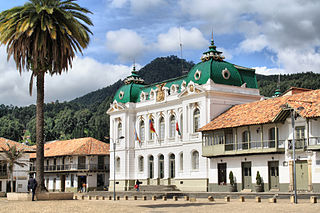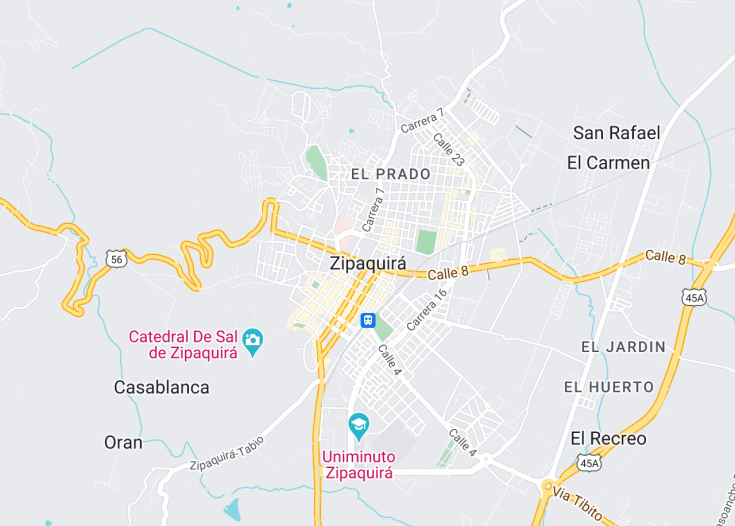Nestled in the heart of Colombia’s Andean mountains, Zipaquirá is renowned worldwide for its majestic Salt Cathedral. Carved from active salt mines deep below the earth’s surface, this monumental architectural feat combines religious devotion with striking artistic expression. Zipaquirá’s charming colonial architecture, vibrant cultural scene, and the intriguing history of salt mining provide visitors with a unique glimpse into Colombia’s rich heritage. This destination is perfect for those looking to explore a blend of natural beauty, history, and spirituality.
When visiting Zipaquirá, ensure to explore the Salt Cathedral early in the morning to enjoy a more serene experience away from larger crowds.
Don’t miss a walk through Zipaquirá’s historical center, where you can savor local cuisine and admire the colonial architecture that dots the cityscape.
Top things to do & see in Zipaquira
Select the following sights and activities to discover best tickets and tours available in Zipaquira.
Zipaquira: The City of Salt
| Country | Colombia |
| Time in Zipaquira | GMT-5 |
| Language spoken | Spanish |
| Population | 129,402 (according to the latest census of 2023) |
| Currency | Colombian Peso (COP, $) |
| Airports |
|
Located just a short drive from Bogota, Zipaquira is one of Colombia’s most significant historical towns, primarily famed for its impressive Salt Cathedral. Carved out of a still-active salt mine deep underground, this structure is not only a monumental architectural achievement but also a pivotal place of pilgrimage for the local community. The city’s economy thrives on salt production, which has been a tradition for centuries, and today, it extends to attracting tourists from all corners of the world. Zipaquira’s history dates back to the pre-Columbian era, where it was originally settled by the indigenous Muisca people, who were known for their skilled salt mining. The Spaniards, realizing the potential of this precious mineral, developed the town around the salt trade during the colonial era. Modern Zipaquira still holds echoes of its past, with well-preserved colonial architecture and the continual reverence for its salt reserves. Visitors to Zipaquira can explore a variety of attractions beyond the Salt Cathedral. The town’s central square, surrounded by quaint colonial buildings, offers a glimpse into Colombia’s past. Museums dedicated to the history of salt and the town’s cultural heritage provide insightful experiences. Furthermore, local craft markets and traditional Colombian restaurants make it a vibrant place to delve into the country’s customs and cuisine. The cultural significance of Zipaquira is immense, as it stands as a testament to human creativity and the spiritual depth of Colombia, blending indigenous histories with Catholic traditions. The journey into the cathedral’s subterranean world is not just a touristic adventure but a voyage through time and spirituality. Above ground, the city maintains a peaceful charm, with rolling hills and green landscapes providing a tranquil escape from the bustling capital nearby. For those interested in a deeper understanding of Colombian culture and history, Zipaquira offers a unique and enriching experience that combines natural beauty, historic exploration, and architectural wonder.
Where is Zipaquira?
Zipaquira is nestled in the Andean savanna of Colombia, north of Bogota, offering picturesque landscapes complemented by its rich salt deposits.
Distances:
| Route | Distance by car | Time by car |
|---|---|---|
| Bogota to Zipaquira | 29 miles (47 kilometers) | 1 hour |
| Bucaramanga to Zipaquira | 231 miles (372 kilometers) | 6 hours |
| Medellin to Zipaquira | 260 miles (418 kilometers) | 7 hours |
What is Zipaquira famous for?
Zipaquira is globally renowned for its architecturally stunning Salt Cathedral, an underground church built within the tunnels of a salt mine, drawing both pilgrims and tourists alike.
History
Pre-Colonial Period (Before 1600)
The region now known as Zipaquirá, situated in the heart of Colombia, has been inhabited since prehistoric times. The area gained prominence due to its salt mines, which were crucial for the indigenous Muisca people. They regarded salt not just as a commodity but as a sacred element, integral to their religious and economic practices. The Muisca chieftains, known as zipas, controlled the extraction of salt from the brine pools, solidifying the area’s importance long before the arrival of European settlers.
Colonial Period (1600 – 1810)
With the arrival of the Spanish in the early 16th century, Zipaquirá became an essential colonial outpost, primarily due to its salt resources. The town was officially founded in 1600 by the Spanish, who were keen to capitalize on the salt trade. The indigenous techniques were refined, and large-scale production began, contributing significantly to the Spanish Crown’s wealth. Over the centuries, the town grew around the salt industry, with beautiful colonial architecture still evident in its historic center today.
The Struggle for Independence (1810 – 1830)
The early 19th century was a turbulent time for Zipaquirá, as it was for much of colonial South America. The town played a role in the battles for independence from Spanish rule. Notably, it was involved in the revolutionary movements led by Simón Bolívar, who fought in several battles in and around the area. Post-independence, the town had to rebuild its economy and infrastructure, adjusting to life after colonialism.
Modern Era (1830 – Present)
In the centuries that followed, Zipaquirá continued to develop around its salt mines. The 20th century saw the opening of the Salt Cathedral of Zipaquirá, an extraordinary church built within the tunnels of a decommissioned salt mine, which became a pivotal religious site and tourist attraction. Today, Zipaquirá is recognized not only for its historical salt production but also as a cultural hub, with its unique blend of indigenous and colonial heritage.
Visit Zipaquira
What to see and do in Zipaquira
Zipaquira, renowned for its captivating historical allure and cultural richness, offers a variety of attractions and activities:
- Explore the Salt Cathedral of Zipaquira, an architectural marvel and a symbol of Colombian creativity.
- Stroll through the historic center, admiring the colonial architecture and the tranquil ambiance of its streets.
- Visit the Independence Square and the Diocesan Museum of Religious Art to delve deeper into the area’s history.
- Engage with local culture at the Crafts Market, where traditional salt-based crafts and other local products are sold.
Festivals in Zipaquira
Zipaquira hosts several cultural events that highlight its rich heritage:
- The Salt Festival in July celebrates the town’s long-standing relationship with salt mining through music, dance, and salt carving contests.
- The “Festival of the Zipa” in October offers a historical reenactment of the Muisca civilization’s traditions.
These events provide insights into both the historical and contemporary aspects of Zipaquira.
Best time to visit Zipaquira
For pleasant weather and the opportunity to partake in local festivals, the best times to visit Zipaquira are during the dry seasons from December to March and from July to August. These periods offer optimal conditions for exploring the historic sites and participating in outdoor activities.
Is Zipaquira worth visiting?
Indeed, Zipaquira is worth visiting for anyone interested in architecture, history, or culture. The town offers a unique glimpse into Colombia’s past through its incredible Salt Cathedral, charming colonial architecture, and vibrant cultural events, all set within the stunning Andean landscape. Zipaquira is a perfect blend of natural beauty, historical significance, and cultural richness, making it a must-visit destination.










